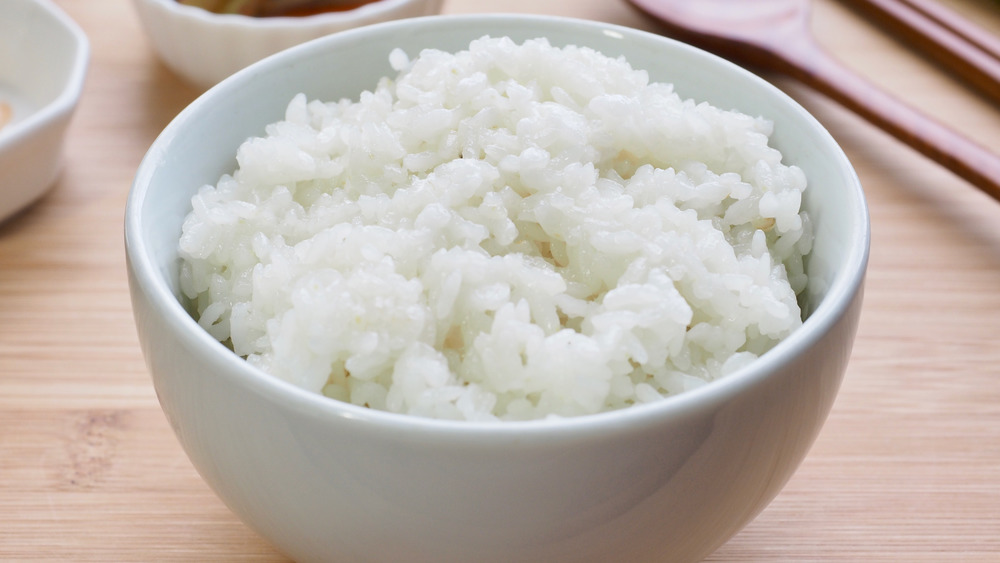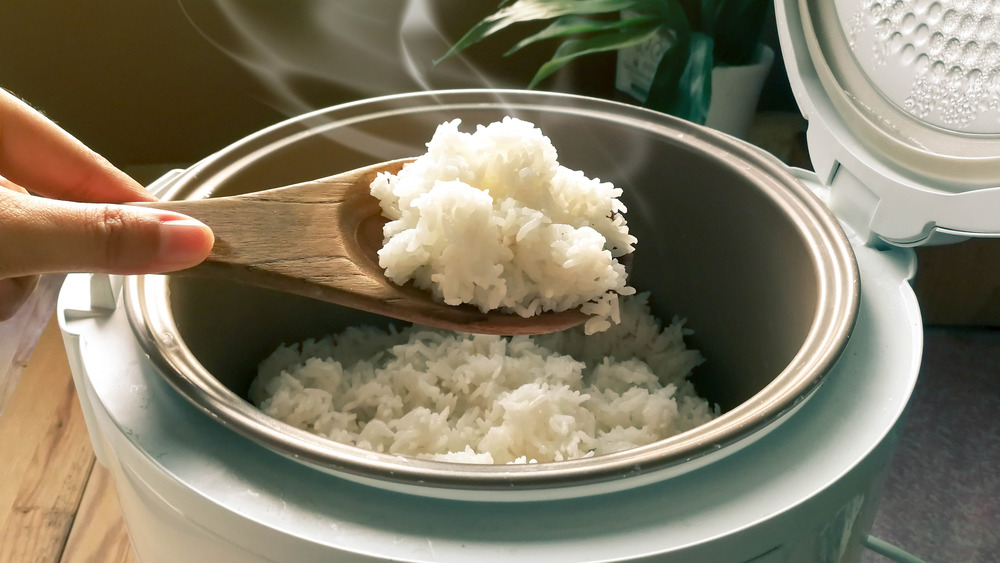This Is The Best Rice For Sticky Rice
General Tsao's chicken, beef and broccoli, shrimp lo mein — everyone has their go-to Chinese takeout order. But no matter what dish you prefer, there's one thing every fan of Asian cuisine can likely agree on: No meal is complete without a heaping serving of sticky rice. Sometimes called sweet rice or glutinous rice, The Spruce Eats explains that the dish consists of rice that, as the name suggests, is sticky and almost gluelike. The idea is that the rice clumps together so much that it's easy to eat with chopsticks or, as in traditional Thai culture, rolled up and eaten with your hands, according to Thai Ginger.
While you can order sticky rice at almost any Thai, Chinese, or Japanese restaurant, you can also make it fairly easily at home. The key isn't a fancy rice cooker or special tool but rather the rice itself. You really just need the right kind of rice, not just the white rice you have lying around in the pantry.
When shopping for sticky rice ingredients, look for Thai rice
Sticky rice is not the same as regular rice, so you have to know what to look for at the grocery store. According to Food52, most sticky rice in the U.S. is labelled as "glutinous rice" or "Thai sweet rice." The culinary site also recommends sticking to Thai brands, like Three Horses or Rose, when possible to make sure you're getting the most authentic sticky rice. (Note that this specialty rice is also typically more expensive than regular rice, sometimes even double the price.)
Why won't plain old white rice work? It's because of science, The Spruce Eats explains. All rice contains two different types of starch: amylose and amylopectin. While regular rice contains a higher amount of amylose (between 19 and 23 percent), sticky rice contains no more than one percent of amylose. This low amylose content is what causes the rice to stick together when cooked.

